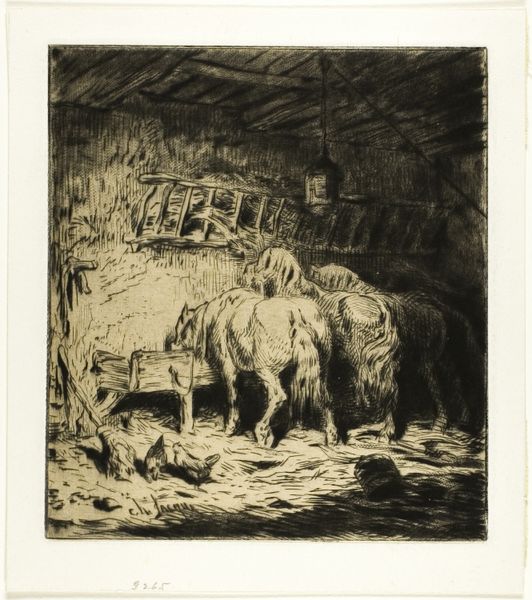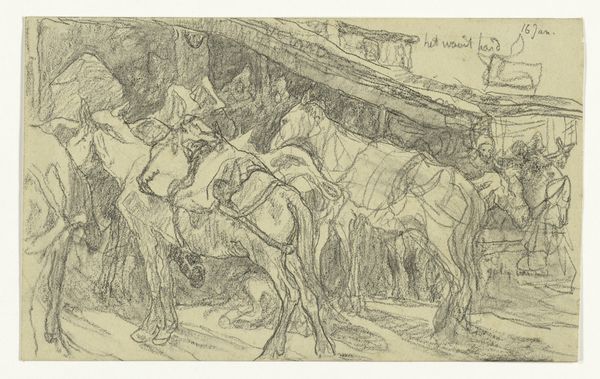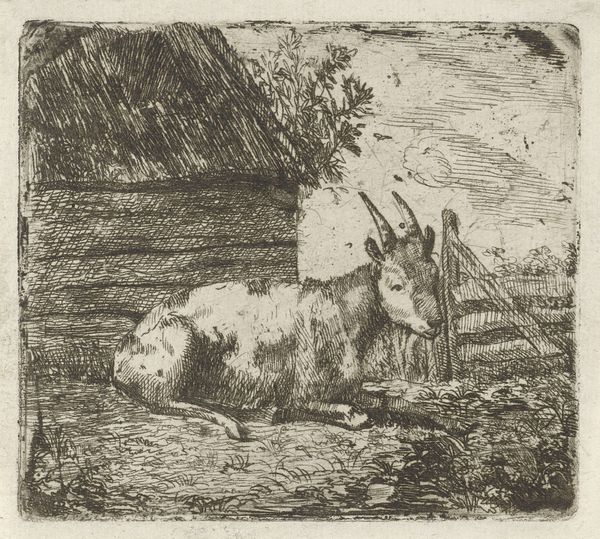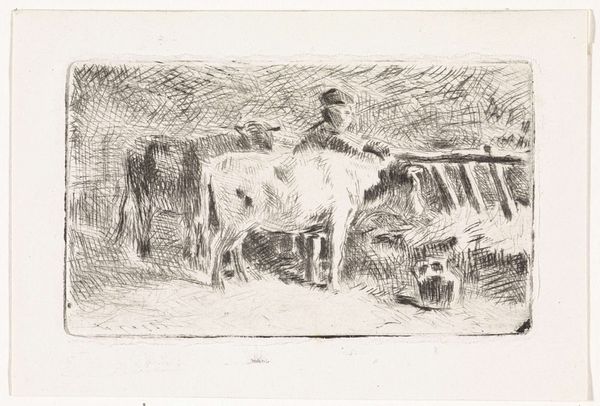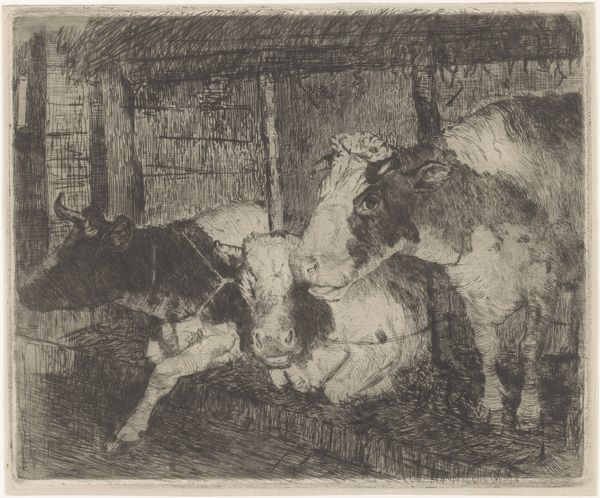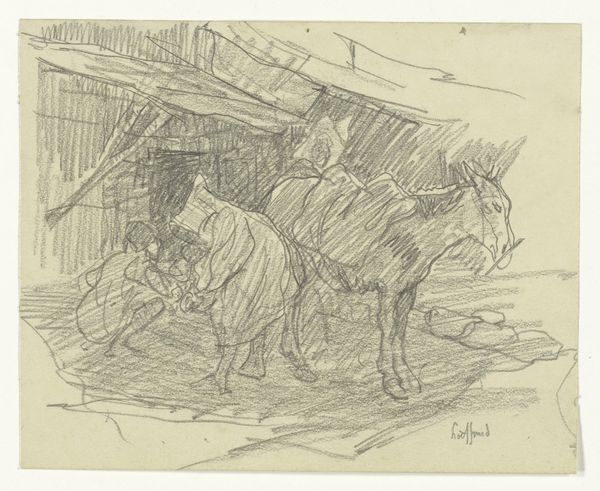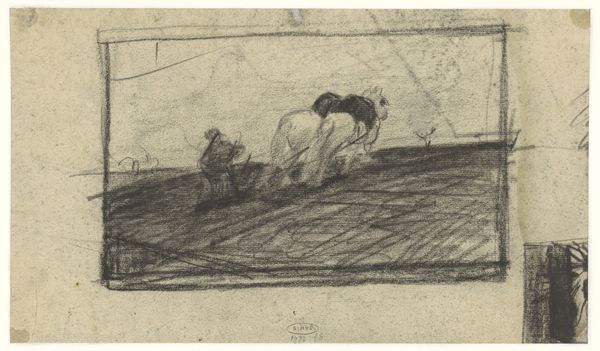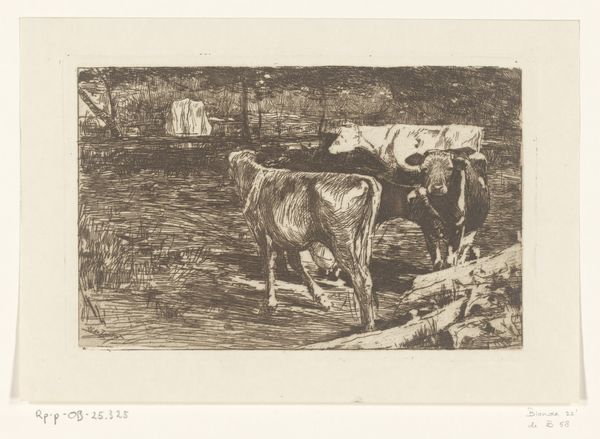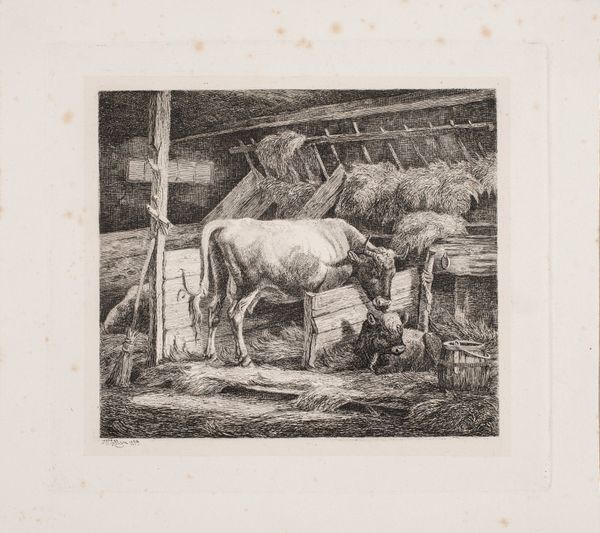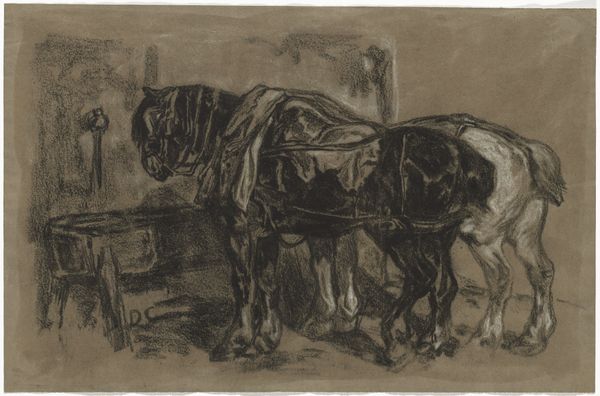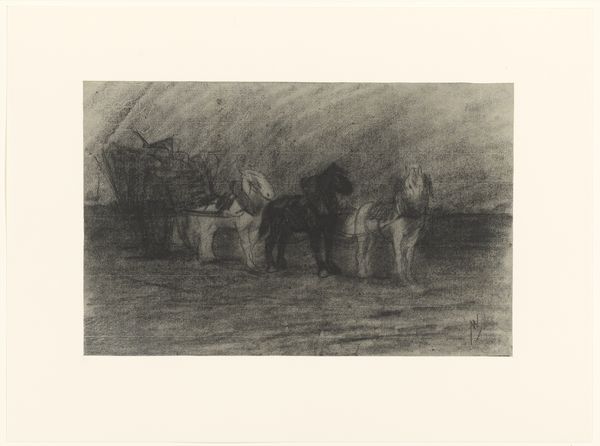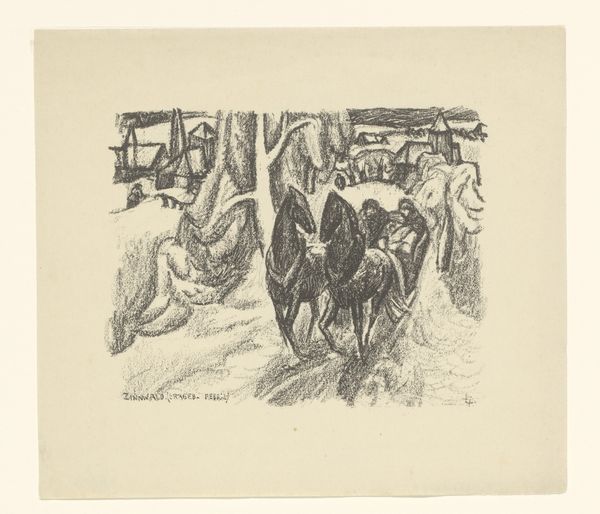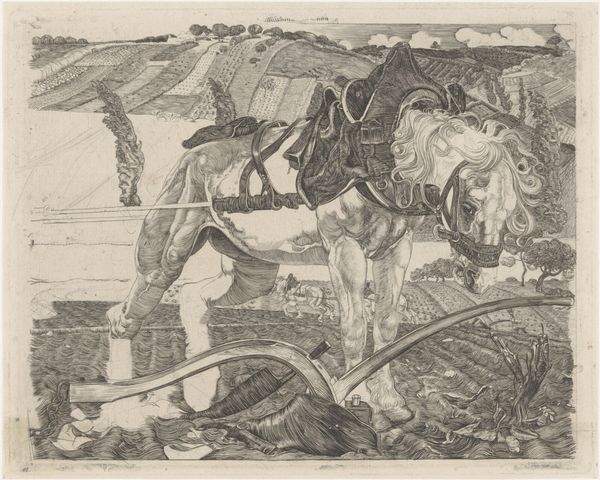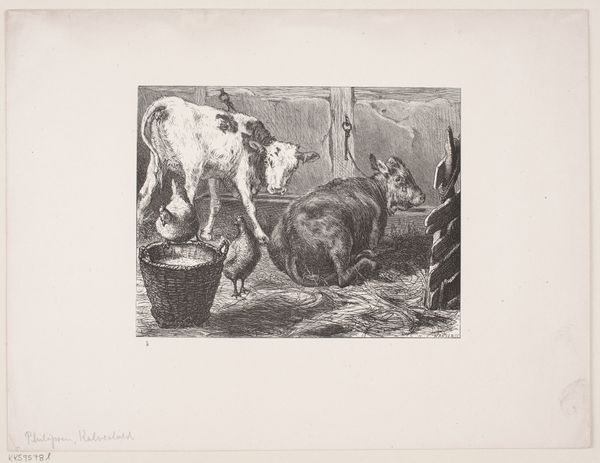
drawing, print
#
drawing
# print
#
landscape
#
horse
#
genre-painting
#
realism
Dimensions: Sheet (Trimmed): 5 5/16 × 4 1/2 in. (13.5 × 11.5 cm) Plate: 4 7/16 × 3 15/16 in. (11.3 × 10 cm)
Copyright: Public Domain
Editor: This is "Stable," a print made in 1848 by Charles Jacque, currently housed in the Met. I am immediately struck by its grainy texture, due to it being a drawing and print, but how this creates a feeling of intimacy, like you’re really there. What are your thoughts? Curator: I'm interested in how Jacque’s piece represents not only a scene, but the labor associated with animal husbandry in 19th-century France. Look at the detail in the construction of the stable itself. Editor: Yes! The rafters and feeding trough. What does this attention to detail imply? Curator: It implies a focus on the materials, tools and, by extension, the processes involved in rural life. The very act of depicting this stable, with its specific construction, elevates the everyday, the ‘low’ subject matter to a level worthy of artistic representation. Think about the availability, distribution, and value placed upon these humble materials at the time. Editor: So it's less about the idyllic vision of country life, and more about understanding it in the context of labor and material production. How does that contrast with other artwork from that time period? Curator: This piece sits in stark contrast to romanticized pastoral scenes which often glossed over the realities of agrarian life. Jacque shows us the grit. Can we consider that there are people behind the horses’ well-being? How is their labour rendered or unrendered? Editor: This has made me think so differently about the material reality depicted here, and the unseen labor that it represents. I'm so glad you pointed this out to me. Curator: Yes, focusing on material conditions encourages a critical dialogue between object, artist and consumer.
Comments
No comments
Be the first to comment and join the conversation on the ultimate creative platform.
